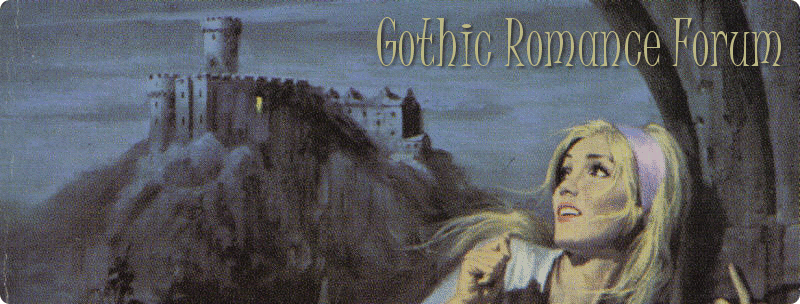Posts: 4
Threads: 4
Joined: Jul 2007
Reputation:
1
An English governess to a young French count is plunged into mystery when attempts are made on her charge’s life. A modern Gothic romance in the traditional fashion. Setting is in France, heroine is a governess, hero is mysterious, theme is murder for money and power. A bit formulaic for Gothic connoisseurs but well-written and entertaining for Gothic lovers.
Posts: 129
Threads: 54
Joined: Nov 2008
Reputation:
3
I think I might add upon above review a little.
The heroine, Linda, is the child of an English father and a French mother, lived in Paris till the age of 14 when both parents died in a plane crash. She was put in a London orphanage for seven years and after that was a teacher in an all boys school for a couple of years. Through one of the governers of the orphanage she is offered the job of governess to the 9 year old Philippe, comte de Valmy. It's about 1955, I guess. She's been wanting to get back to France all the time so she's happy with this opportunity. She even pretends not to speak the French language that well, as apparently the boy's uncle and aunt, who take care of him after his own parents died the year before, expressed the wish to employ a governess who just knows English. The housekeeper and butler turn out to be English as well. A lot of the early story is about this deception and I wondered where all that could lead to. I was hoping for some eavesdropping on the French speaking people, but that didn't happen. About half way in the book the deception fell through and not a big deal was made of it. So what was the point of all that? Don't worry! It'll be explained.
The hero, Raoul, didn't seem mysterious at all to me. He was the uncle's son, age about 30 (heroine is 23), who visited a couple of times at the castle. Linda and he got along famously, went to dinner and dancing and argued a little as well. Linda admits early on she's falling in love with Raoul, not only to the reader but also to him. It's only later when someone explains that Raoul was behind one of the attempts on the little boy's life, that Linda reluctantly starts avoiding him and treating him as a suspect.
The prose is very good. A lot of references are made to poetry, including the title, though I really don't understand that one. The heroine's father was a poet and writer, so she was brought up thinking in terms of Shakespeare, William Blake and lots of others. I'm sure the reader who is familiar with English poets will appreciate this. Fortunately there isn't much other "noise" in the story. By this I mean long descriptions of nature, furniture, clothing, people etc. which I sometimes feel an author is using to fill the book, not having enough elements on hand that really pertain to the story. I needed to curb my habit of skimming over boring bits or else I would have missed something vital.
My verdict: a 7 out of 10
mainly because the book didn't captivate me from the start and also because (don't read on if you don't want to know who did it)
.
.
.
.
.
.
.
.
SPOILER ALERT
there weren't many usual suspects and obviously the uncle couldn't be included because the first murder attempt was through a shooting in the woods and the uncle is an invalid in a wheelchair. It turned out he was the culprit after all, just using a servant and his wife to do his dirty jobs. I prefer having one single bad guy working alone.
Posts: 129
Threads: 54
Joined: Nov 2008
Reputation:
3
Thank you! That sure is deep. Pity it'll be lost on most readers.
Reading this blog made me recall another small disappointment with the book. Linda's father once made a remark about Leon de Valmy that he was a very bad guy who maybe had better died in the accident that made him a invalid. That and the fact that Linda hid her knowledge of French made me hope for some plot surprise in that she knew a lot more of the De Valmy family and had an agenda of her own for revenge or whatever. Didn't happen. You never even learn why her father said that.
Another thing that wasn't explained properly was near the end when Leon de Valmy spoke about his accident and who else was involved. That could have done with more than just one sentence.



